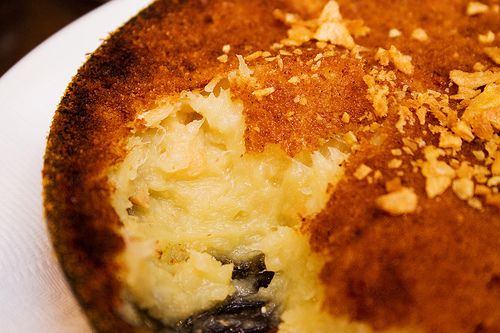Wandering through the old city, in the center of Besançon, i came across the 16th century Palais Granvelle, it is now used as a museum of history.
Inside the Palais Granvelle is a beautiful colonnaded courtyard.
After visiting the Palais Granvelle, I went to one of the other main attractions in Besançon, The Citadel of Besançon, designed by french fortress builder Vauban in 1668. It is on top of a hill surrounded by cliffs overlooking Besançon.
The Citadel is now being used as a Museum of World War 2 French Resistance, a Natural History Museum, and a Zoo.
After all of my wandering around the old city and the Citadel, I became very hungry and decided to go get something to eat. The region is famous for its comté, a mild, nutty cheese.
All of that delicious food was really filling, and I wanted to go into the countryside, so I drove Southwest from Besançon, through the beautiful Franche-Comté region
until I came to a small town calles Arc-et-Senans, that would have been almost empty if not for the Royal Saltworks built there in 1775.
It was envisioned as the center of a city that would grow up around it, but that never developed. It stands directly next to the second largest forest in france: The 80 square mile Forêt de Chaux.

This area of France seems more low key and mundane, but in a good way. It seems like the residents of Besançon, are not the most eager to be put on the tourist maps.
http://wikitravel.org/en/Besan%C3%A7on
http://www.guardian.co.uk/travel/2009/mar/28/besancon-france-city-breaks
http://en.wikipedia.org/wiki/Royal_Saltworks_at_Arc-et-Senans























